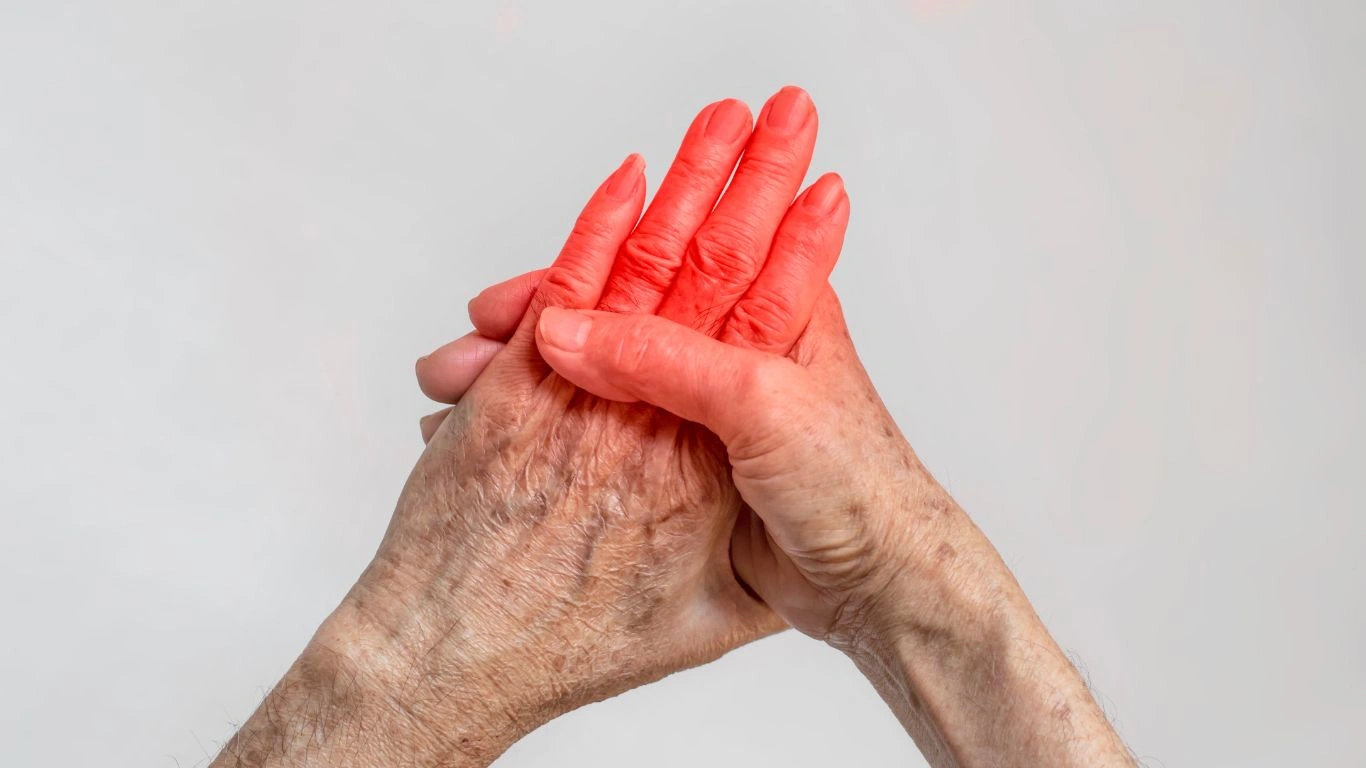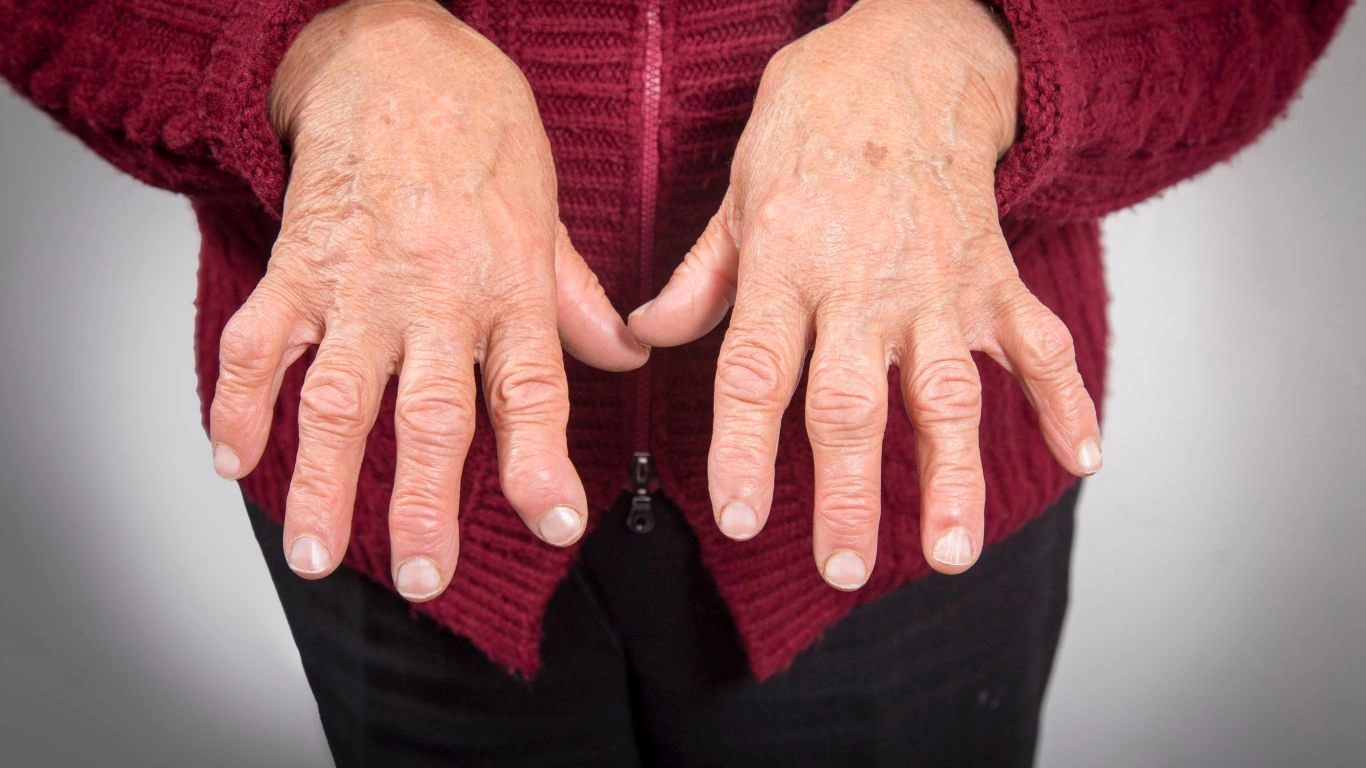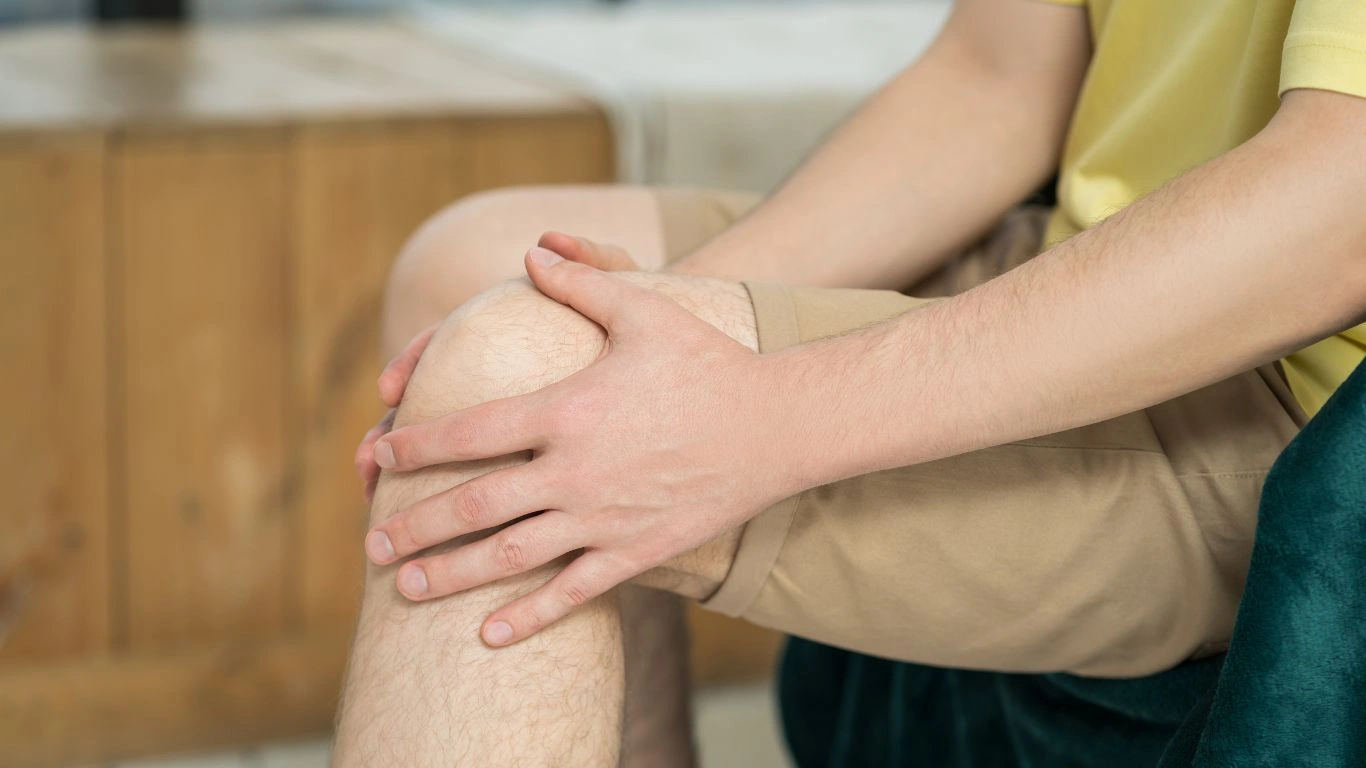Rheumatoid Arthritis and Its Impact on Mobility: A Comprehensive Guide
Living with rheumatoid arthritis (RA) is a daily struggle for many, and one of the most profound impacts it has is on mobility. As a Rheumatology Nurse Practitioner, I’ve seen firsthand how RA doesn’t just cause joint pain – it can seriously limit the ability to move, affecting daily life in ways that go far beyond what’s often visible to others. It’s not just the obvious swelling or stiffness – it’s the constant fatigue, the fear of making the wrong move, and the emotional toll that can come with it. The effect on mobility is more than just a physical challenge – it’s a mental and emotional one too.
The Connection Between Rheumatoid Arthritis and Mobility

Rheumatoid arthritis (RA) is an autoimmune disorder that primarily targets the joints, causing inflammation that leads to pain, stiffness, and swelling. Over time, this inflammation can damage the joints and surrounding tissues, making movement more and more difficult. The most commonly affected areas are the hands, knees, and wrists, but RA can target any joint in the body. The impact on mobility can vary greatly depending on the severity of the disease and how well it is managed. For some, it’s a gradual decline in function; for others, it’s a sudden and severe limitation of movement.
How RA Affects Daily Mobility
When people think of rheumatoid arthritis, they often think of pain and swelling. While these are certainly key symptoms, the real challenge is the way RA interferes with normal movement. Here’s a glimpse into how RA affects mobility on a daily basis:
- Morning Stiffness: One of the first signs of RA in the morning is joint stiffness. This stiffness can last for hours, making even simple tasks like brushing teeth or getting dressed incredibly challenging. Many people with RA feel like their joints are “locked” when they wake up, making movement feel like a monumental effort.
- Joint Deformities: Over time, untreated or poorly managed RA can lead to joint deformities. This can cause fingers or toes to become crooked or misshapen, further limiting a person’s ability to move or use their hands and feet in the way they’re used to.
- Fatigue: Chronic fatigue is a hallmark of RA, and it affects mobility in a big way. Even if a person’s joints aren’t visibly inflamed, the constant fatigue can make walking, climbing stairs, or even standing for long periods feel exhausting.
- Pain and Swelling: Joint pain and swelling can be unpredictable. Some days may be manageable, while others may be so debilitating that walking, driving, or participating in social activities becomes impossible. Swollen joints are not only painful but can also make certain movements difficult or even impossible.
Emotional and Psychological Impact on Mobility
While it’s clear that RA impacts physical movement, it’s just as important to understand how it affects mental and emotional health. I’ve seen countless patients struggle not just with pain but with the emotional toll of losing their ability to move as freely as they once did.
- Frustration and Helplessness: There’s a deep sense of frustration that comes with not being able to do the things you love or even the basic things you need to do for daily life. This can lead to feelings of helplessness, especially if mobility is severely impaired.
- Anxiety and Depression: Chronic pain, coupled with a loss of independence, can lead to feelings of anxiety and depression. Not being able to participate in family events, go for a walk, or simply pick up a child can be heartbreaking. It can also create a cycle of isolation, which only worsens mental health.
- Loss of Independence: One of the hardest aspects of RA is the potential loss of independence. As the disease progresses, people with RA may find themselves relying on others for help with daily activities – whether that’s getting in and out of the car, cooking a meal, or simply walking to the bathroom. This can be incredibly demoralizing and contribute to a decline in mental well-being.
Rheumatoid Arthritis and its Impact on Mobility in the Workplace

For many people living with rheumatoid arthritis, the challenges don’t end at home. RA’s effect on mobility can also have a significant impact on a person’s professional life. As a nurse practitioner, I’ve encountered patients who struggle with maintaining their careers due to the physical limitations caused by RA. For those with physically demanding jobs, the impact can be even more pronounced.
Challenges at Work
Working with RA isn’t just about pain management – it’s about how the disease affects your ability to move, sit, stand, or perform tasks at work. Here are some common challenges faced by individuals with RA in the workplace:
- Difficulty with Mobility in the Office: For office workers, tasks like typing or filing papers can become painful as the disease progresses. Long hours sitting at a desk can lead to joint stiffness, and tasks like walking to meetings or carrying heavy files can become increasingly difficult.
- Physical Labor Challenges: For those in more physically demanding roles, RA can be a game-changer. Jobs that require heavy lifting, bending, or standing for long periods of time can be overwhelming. This often leads to missed workdays and a higher likelihood of workplace accidents, as mobility is impaired.
- Frequent Sick Days: The fatigue and pain associated with RA can make it difficult to maintain a regular work schedule. People with RA often need to take sick days for rest, medical appointments, or flare-ups. This can lead to tension at work and concerns about job security.
Adapting the Workplace for Better Mobility
For those with RA, it’s crucial to create an environment that accommodates their mobility challenges. Many workplaces can make simple adjustments to help employees manage their condition without compromising performance. This can include:
- Ergonomic Workstations: Adjusting desks, chairs, and keyboards to allow for better posture and less strain on joints.
- Flexible Work Hours: Offering the option for part-time work or flexible hours to accommodate medical appointments and rest periods.
- Workplace Mobility Aids: Providing walking aids, chairs, or standing desks to make movement easier throughout the day.
The Future of Mobility and Rheumatoid Arthritis Treatment

The future of rheumatoid arthritis treatment is bright, and ongoing research continues to bring new therapies that aim to preserve mobility and improve the quality of life for patients. Medications like disease-modifying antirheumatic drugs (DMARDs), biologics, and Janus kinase (JAK) inhibitors are already making a huge difference in managing the disease and preventing long-term joint damage. As treatments evolve, there is hope that RA patients will experience less pain, less inflammation, and better overall mobility.
Managing Mobility Challenges in Rheumatoid Arthritis

As someone who works closely with individuals suffering from rheumatoid arthritis, I can tell you that the journey toward better mobility isn’t just about taking medication – it’s about developing a comprehensive approach that includes physical therapy, lifestyle changes, and mental health support. RA doesn’t just affect the joints; it affects the entire body. So, when addressing mobility issues, it’s crucial to take a holistic approach that goes beyond treating the joints alone.
Physical Therapy: A Key Component in Improving Mobility
Physical therapy is often one of the first things I recommend to patients struggling with mobility. While medications help control inflammation and pain, physical therapy can restore strength, flexibility, and range of motion. It’s a powerful tool for enhancing mobility, especially for those whose joint function is starting to decline.
- Strengthening Muscles Around Affected Joints: One of the primary goals of physical therapy is to strengthen the muscles surrounding the affected joints. Stronger muscles can help support the joints, reduce pain, and improve mobility. For example, exercises designed for the knees can help protect the joint and reduce the strain on it, making it easier to walk or climb stairs.
- Range of Motion Exercises: These exercises aim to improve flexibility and prevent stiffness. The more flexible your joints are, the easier it becomes to move them without experiencing pain or discomfort. It’s like oiling a rusty hinge – the smoother the joint moves, the better it functions in everyday activities.
- Balance Training: RA can cause instability in the joints, making it harder to maintain balance. Physical therapists often incorporate balance exercises to reduce the risk of falls and help improve walking ability.
What I always stress to my patients is the importance of consistency. Physical therapy isn’t a one-time fix. It requires ongoing effort and dedication to see real improvements. But when the results kick in, the sense of freedom and mobility that comes back is incredible. I’ve had patients tell me that they finally felt like they could move again, something that seemed impossible when they were first diagnosed.
Adaptations and Assistive Devices for Mobility

As RA progresses, many people find that assistive devices and adaptations to their living space become essential in maintaining mobility. While some may feel hesitant about using mobility aids at first, I’ve found that these tools are often game-changers, offering greater independence and comfort.
Types of Assistive Devices
There are a variety of devices that can help individuals living with RA maintain their mobility and independence. Here are a few of the most common ones:
- Walking Aids: Canes, walkers, and crutches can make it easier to get around without putting too much strain on affected joints. These aids help redistribute weight away from the painful joints, reducing discomfort while walking or standing for long periods.
- Orthotic Devices: Custom-made shoe inserts or braces can help with alignment, support, and reducing pressure on joints, especially the feet, knees, and wrists. Orthotics can also improve walking mechanics, which in turn supports overall mobility.
- Grab Bars and Handrails: In the home, simple modifications like adding grab bars in the bathroom or handrails along staircases can make a big difference in maintaining balance and reducing the risk of falls.
- Ergonomic Tools: Ergonomic tools like specially designed kitchen utensils, pens, and even keypads can help individuals with RA avoid excessive strain on their hands and wrists, which is crucial for anyone who struggles with joint pain in those areas.
Adapting Your Environment for Better Mobility
Another key element in managing RA-related mobility issues is adapting your environment to meet your needs. This doesn’t necessarily mean major renovations, but rather making thoughtful changes to make life a bit easier. Here are a few suggestions:
- Remove Tripping Hazards: Clutter and uneven floors can pose a serious risk to someone with RA, especially if they’re using mobility aids. Keeping walkways clear and ensuring floors are even can help reduce the chance of falls.
- Use Elevated Furniture: For people with RA, getting in and out of low chairs or beds can be difficult. Elevating furniture or using chairs with proper support can help make sitting and standing up a lot easier.
- Organize for Accessibility: Keep frequently used items within easy reach. This can prevent unnecessary bending, stretching, or twisting motions that may aggravate joint pain. Using tools like reachers or grabbers can also help with tasks that involve getting items from high shelves.
Nutrition and Lifestyle Changes to Support Mobility

In addition to medical treatment and physical therapy, lifestyle changes like diet, exercise, and stress management play a big role in supporting mobility and overall well-being. When it comes to mobility, we can’t ignore the body’s need for proper fuel and care.
Anti-Inflammatory Diet
Diet is one of the most overlooked aspects of managing rheumatoid arthritis. As someone who has worked with many RA patients over the years, I can’t stress enough how food can either fuel inflammation or help reduce it. An anti-inflammatory diet can have a huge positive impact on joint health and mobility.
- Omega-3 Fatty Acids: Found in fatty fish like salmon, sardines, and mackerel, omega-3s have been shown to reduce inflammation and may help alleviate some of the pain and stiffness caused by RA.
- Fruits and Vegetables: A diet rich in fruits and vegetables provides antioxidants that can combat oxidative stress and reduce inflammation. Green leafy vegetables like spinach and kale, as well as berries like blueberries, are especially beneficial.
- Whole Grains: Whole grains such as oats, brown rice, and quinoa can help reduce inflammation and improve overall joint function. These foods also provide fiber, which is crucial for overall health.
- Avoiding Processed Foods: Processed foods, especially those high in sugars, refined grains, and unhealthy fats, can exacerbate inflammation. Reducing the intake of these foods can help control flare-ups and improve mobility over time.
Exercise and Physical Activity
While it may seem counterintuitive to exercise when you’re experiencing pain, staying active is essential for maintaining joint mobility and overall function. Low-impact exercises like swimming, walking, or cycling are great options for people with RA, as they put less stress on the joints while still providing the benefits of movement.
Exercise helps strengthen muscles, improve flexibility, and support bone health. Just as importantly, it can boost mood and energy levels, which can be especially beneficial for individuals struggling with the fatigue that often accompanies RA.
Stress Management
Stress is another factor that can exacerbate symptoms of RA, including pain and fatigue. Stress management techniques such as meditation, deep breathing exercises, yoga, and even simple mindfulness practices can help lower inflammation levels and improve overall mobility.
Ultimately, managing rheumatoid arthritis and its impact on mobility requires a combination of medical treatment, lifestyle changes, and emotional well-being. As a healthcare provider, I’ve seen how patients who take a proactive approach to their care – embracing physical therapy, modifying their environment, making dietary changes, and managing stress – tend to experience better mobility and a higher quality of life.
Living with Rheumatoid Arthritis: Stories of Resilience and Hope

As a Rheumatology Nurse Practitioner, I’ve seen so many remarkable stories of resilience from people living with rheumatoid arthritis (RA). While the disease can be incredibly challenging, it’s also a reminder of the strength and perseverance that many individuals demonstrate every day. Whether it’s a patient who, despite joint pain and swelling, is determined to keep working or a person who finds ways to continue enjoying their hobbies – these are the real stories that deserve to be shared. It’s not just about the physical journey of RA, but about the emotional and mental strength required to keep going, despite the challenges.
Overcoming Daily Obstacles: Stories of Determination
I’ve worked with so many individuals who have found creative ways to adapt to the limitations that RA can impose. I’ve had patients who, at first, felt defeated by the idea of not being able to do their favorite activities – whether it’s walking their dog, gardening, or playing with their kids. However, with time, I’ve seen them discover ways to work around their pain. One patient, a passionate gardener, initially thought RA would take that away from her. But with adaptive tools like a raised garden bed and ergonomic gloves, she was able to continue tending to her plants, and in the process, she also experienced the therapeutic benefits of nature. Her determination not to give up on what she loves is an inspiring reminder that even small changes can make a big difference in maintaining mobility and independence.
Another patient of mine, a father of three, was having a tough time picking up his kids due to the pain in his hands and shoulders. After trying different assistive devices and incorporating physical therapy into his routine, he started to notice a difference. He told me that he could now comfortably lift his children without feeling the intense pain he once did. That moment was so rewarding, not just for him, but for me as a healthcare provider, seeing someone regain a sense of normalcy and joy in their life again. Stories like this highlight how, with the right approach and mindset, RA doesn’t have to take away the things that truly matter.
The Role of Support Networks in Managing Rheumatoid Arthritis

As important as it is to have a strong medical team, it’s equally vital to have a reliable support system in place when living with rheumatoid arthritis. Family, friends, and even online communities can make a huge difference in how people cope with the disease, especially when it comes to managing the impact on mobility.
Emotional Support and Connection
In my experience, people with RA often feel isolated due to the challenges they face daily. The physical limitations can lead to emotional strain, and without a strong support network, it can be easy to fall into a cycle of loneliness and frustration. That’s why having someone who understands your struggles – whether it’s a spouse, a friend, or a support group – is so crucial. I’ve seen how these connections can lift spirits, provide encouragement, and even offer practical tips on managing daily tasks.
One patient, who had recently been diagnosed with RA, was initially overwhelmed by the prospect of not being able to keep up with her usual activities. However, after joining a local support group, she began to share her experiences and hear from others who were going through the same thing. Not only did it help her emotionally, but she also learned valuable strategies for adapting her environment and lifestyle to make things easier. Being able to talk openly about her challenges gave her a sense of relief and strength she hadn’t expected. Sometimes, just knowing that you’re not alone can make all the difference.
Family Involvement and Practical Assistance
Family members also play an integral role in managing RA. It’s not just about emotional support, but also about practical help. Many of my patients have found that asking for help with everyday tasks – such as cooking, cleaning, or even carrying groceries – can reduce the strain on their joints and conserve their energy for other important activities. It’s not always easy to ask for help, but I encourage my patients to reach out to their loved ones. More often than not, families are more than willing to pitch in. Whether it’s helping to take the kids to school or assisting with household chores, these acts of kindness can alleviate some of the burden of living with RA.
Future Innovations: Advancements in Rheumatoid Arthritis Treatment
The future of rheumatoid arthritis treatment is incredibly promising. As research continues to evolve, we are seeing more effective treatments that not only help reduce inflammation but also protect joint health and improve mobility. The goal is to not just manage the symptoms but to prevent long-term joint damage, which can significantly affect mobility.
Emerging Therapies and Medications
In recent years, we’ve seen the rise of biologics and Janus kinase (JAK) inhibitors that have changed the landscape of RA treatment. These therapies target specific molecules involved in the inflammatory process, leading to more precise treatment options and often fewer side effects compared to traditional medications. For many patients, these medications have brought significant relief and helped improve mobility, making it possible to enjoy daily activities with less discomfort.
Another exciting development is the potential for regenerative medicine, such as stem cell therapy, to offer a new avenue for treating RA. While still in the early stages, these therapies hold the promise of not only reducing inflammation but also repairing damaged joints. Though we’re not there yet, it’s an area of active research, and in the coming years, it may provide more options for those whose mobility has been severely impacted by the disease.
Personalized Treatment Plans
One of the biggest changes I’ve seen in RA management is the shift towards more personalized treatment plans. Instead of a one-size-fits-all approach, healthcare providers are increasingly using genetic markers and biomarkers to tailor treatments to individual patients. This approach allows for a more targeted therapy plan that’s suited to a person’s specific needs, resulting in better outcomes and potentially better mobility.
Disclaimer
The information in this article is for general informational purposes only. It is not intended as medical advice and should not be considered a substitute for professional medical care, diagnosis, or treatment. Always consult with a qualified healthcare provider for personalized advice and guidance regarding your health and medical condition. If you or someone you know is experiencing symptoms of rheumatoid arthritis, it’s important to seek medical attention as early as possible for a proper diagnosis and treatment plan.
For more information on rheumatoid arthritis, you can visit trusted sources such as NIH and Health.com.

Tarra Nugroho is a dedicated Nurse Practitioner with a strong foundation in family and preventive care. She brings both compassion and clinical expertise to her practice, focusing on patient-centered care and health education. As a contributor to Healthusias.com, Tarra translates medical knowledge into clear, empowering articles on topics like women’s health, chronic disease management, and lifestyle medicine. Her mission is simple: help people feel seen, heard, and informed—both in the clinic and through the content she creates. When she’s not caring for patients, Tarra enjoys weekend hikes, plant-based cooking, and curling up with a good health podcast.






